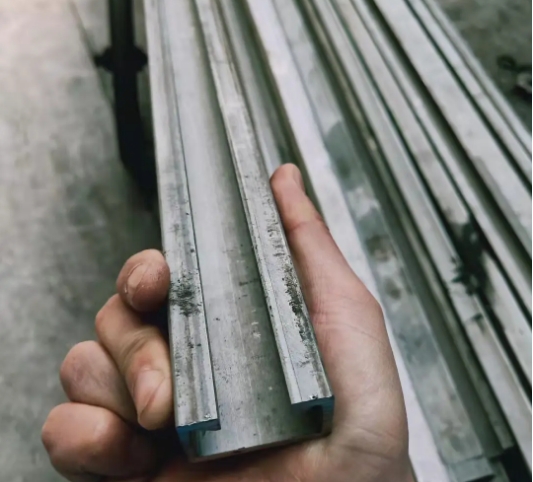Steel Shapes: Types and Production Processes Introduction
Time:2024-04-11 16:18:30 Source:未知 Click:次
Steel special-shaped profiles are custom-made steel products with unique shapes that are widely used in construction, automotive, shipbuilding, machinery manufacturing, and other industries. Compared to standard-shaped steel products, special-shaped profiles offer higher utility and cost-effectiveness, meeting customers' specific needs in structural design, space utilization, and more. This article will introduce the types and production processes of steel special-shaped profiles.
I. Types of Steel Special-Shaped Profiles
1. Shape Classification
Steel special-shaped profiles can be divided into angles, channels, I-beams, H-beams, L-beams, U-beams, and other shapes. These profiles come in various sizes, specifications, and materials to cater to different industry applications.
2. Material Classification
Steel special-shaped profiles can be classified into carbon steel profiles and stainless steel profiles. Carbon steel profiles offer good mechanical properties and wear resistance, making them suitable for engineering structures with high requirements. Stainless steel profiles provide excellent corrosion resistance and are ideal for industries such as chemicals and food processing.
3. Application Field Classification
Steel special-shaped profiles can be applied in building structures, bridges, tunnels, automotive manufacturing, shipbuilding, machinery production, and more. Profiles for different applications have different technical requirements and performance indicators.
II. Production Processes of Steel Special-Shaped Profiles
1. Hot Rolling
Hot rolling is the most commonly used method for producing steel special-shaped profiles. This process involves heating the steel billet to an appropriate temperature and then passing it through a rolling mill to achieve the desired shape and size. The advantages of hot rolling are high production efficiency and low cost, although it may result in relatively lower dimensional accuracy and surface quality.
2. Cold Rolling
Cold rolling involves passing the steel billet through a rolling mill at room temperature, followed by stretching through a stretcher to obtain the required profile. Cold rolling offers high dimensional accuracy and good surface quality, but it has lower production efficiency and higher costs.
3. Extrusion
Extrusion involves heating the steel billet to an appropriate temperature and then forcing it through a die to shape it into the desired form. The advantages of extrusion are the ability to produce complex-shaped profiles, but it requires high-quality raw materials and higher production costs.
4. Forging
Forging involves shaping the steel billet, heated to an appropriate temperature, by means of a forging machine. This process results in profiles with high mechanical properties and toughness. However, it requires sophisticated production equipment and higher costs.
5. Casting
Casting involves pouring molten steel into a mold, allowing it to cool and solidify to form the required profile. Casting has simple production equipment but may result in lower dimensional accuracy and surface quality.
In summary, there are many types of steel special-shaped profiles with a wide range of applications. Different production processes are suitable for different shapes, sizes, and materials of profiles. When selecting steel special-shaped profiles, customers need to choose the appropriate profiles and production processes based on their actual needs and application fields. With technological advancements and industrial development, the production technology and application fields of steel special-shaped profiles will continue to expand.


